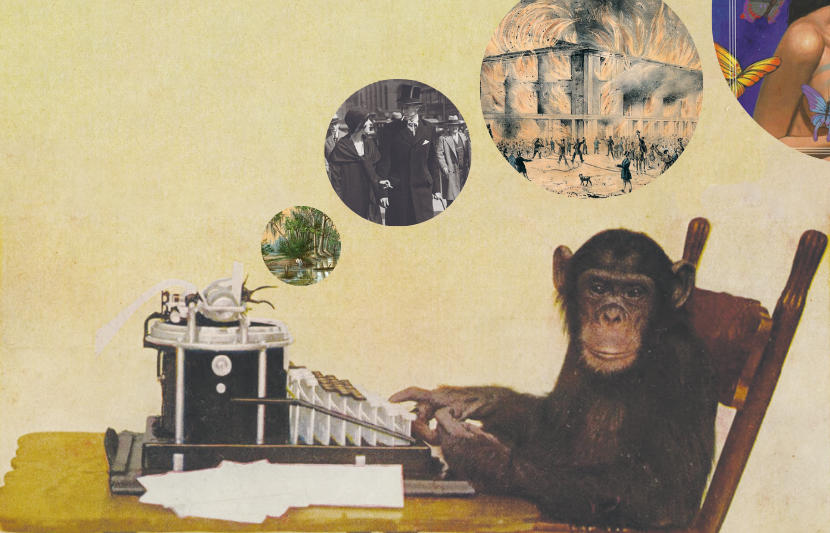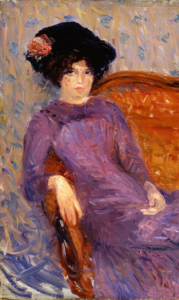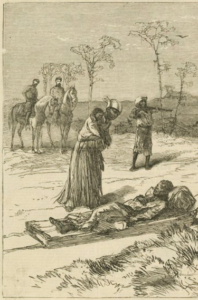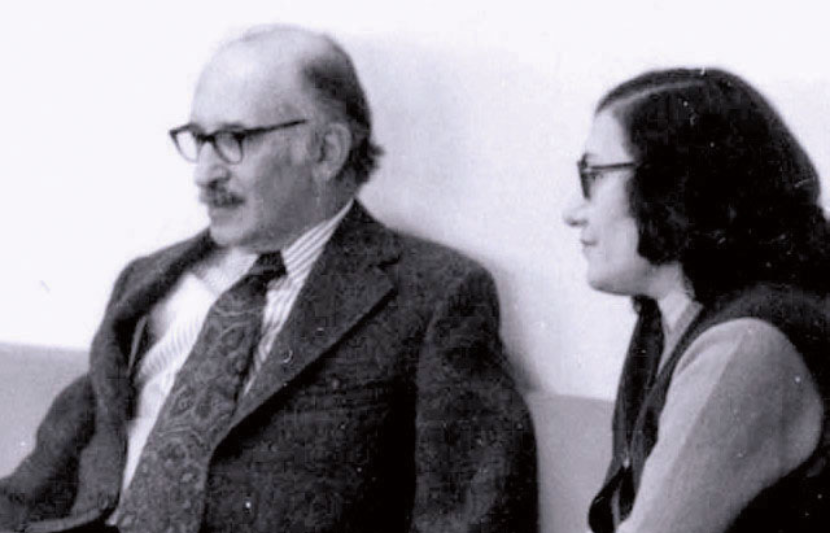
1907 postcard of a chimpanzee at a typewriter (Digital Culture of Metropolitan New York)
As we return from the holidays and look ahead to 2024, we’re excited to share a retrospective of our most-read Story of the Week picks for the year just passed. From Sarah Moore Grimké’s harrowing recollections of Charleston, South Carolina, in the early years of the nineteenth century to Marta Randall’s futuristic tale of a graffiti-spraying sociologist trapped in an underground city, these pieces show the remarkable breadth of LOA’s catalog and belie any settled notions of what properly belongs in America’s literary pantheon.
We hope you enjoy these samplings from some of our nation’s greatest writers, whether they’re already regular fixtures on your nightstand or new voices set for discovery. Click the links below to read the stories in full, and stay tuned for new Story of Week selections coming in January.

The Purple Dress, 1908–10, oil on canvas by American painter William Glackens (1870–1938). Courtesy Smithsonian American Art Museum.
1. “The Purple Dress” by O. Henry
The annual Thanksgiving feast hosted by Maida’s employer is imminent and, come what may, she intends to wear a new dress to impress her colleagues—especially the store’s head clerk.
2. “The Bubble” by Nancy Hale
An eighteen-year-old woman, ambivalent about her marriage and her pregnancy, leaves New York to stay at her mother-in-law’s home in Washington until she gives birth.
3. “Stephen Crane’s Own Story” by Stephen Crane
In this firsthand account, a breach in the hull has swamped the engine room of a steamship sixteen miles off the coast of Florida, and the order is given to abandon ship.

“The Louisiana Murders—Gathering the Dead and Wounded,” from the May 10, 1873, issue of Harper’s Weekly. Courtesy New York Public Library.
4. “The Colfax Massacre Trial” by Levi Nelson and Benjamin Brim
Two survivors testify in the trial of the ringleaders behind one of the deadliest incidents of Reconstruction-era racial violence, which occurred in Colfax, Louisiana, 150 years ago.
5. “A Visit to Avoyelles” by Kate Chopin
When Doudouce hears persistent rumors that his former lover is ill-treated by her husband and overwhelmed by the duties of raising four children, he decides to take action.
6. “The Silver Crown” by Bernard Malamud
A high school science teacher, whose father is dying from an ailment that mystifies doctors, visits a rabbi offering an alternative method for curing the sick.

Bernard Malamud and Cynthia Ozick, backstage before his debut reading of “The Silver Crown” at the 92nd Street Y, New York City, November 6, 1972. Photographer unknown. Image via The Paris Review.
7. “Narrative and Testimony of Sarah M. Grimké” by Sarah Moore Grimké
The daughter of a wealthy planter, who at the time of his death was the chief justice of South Carolina’s top court, describes the horrors she had witnessed in and around Charleston during the first two decades of the nineteenth century.

Cover of New Dimensions 13, scheduled for publication in 1982 but canceled at the last minute by the publisher. Illustration by American artist Carl Lundgren (b. 1947).
8. “A Scarab in the City of Time” by Marta Randall
On a mission to find survivors from an earlier era, a sociologist is trapped inside an ancient, domed city with a hostile population.
9. “Declaration of Conscience” by Margaret Chase Smith
Four years before Joseph McCarthy’s downfall, Smith became the first (and only) Senator to speak publicly against his tactics.
10. “The Wind Bloweth Where It Listeth” by Charles Portis
In Portis’s final story, a local reporter investigates a billionaire-funded project in which armies of monkeys generate massive volumes of text to supersede the “old elitist notion of writing as some sort of algebra.”
You can browse the complete list of previous Story of the Week selections by author or title, and sign up here to receive Story of the Week in your inbox.



